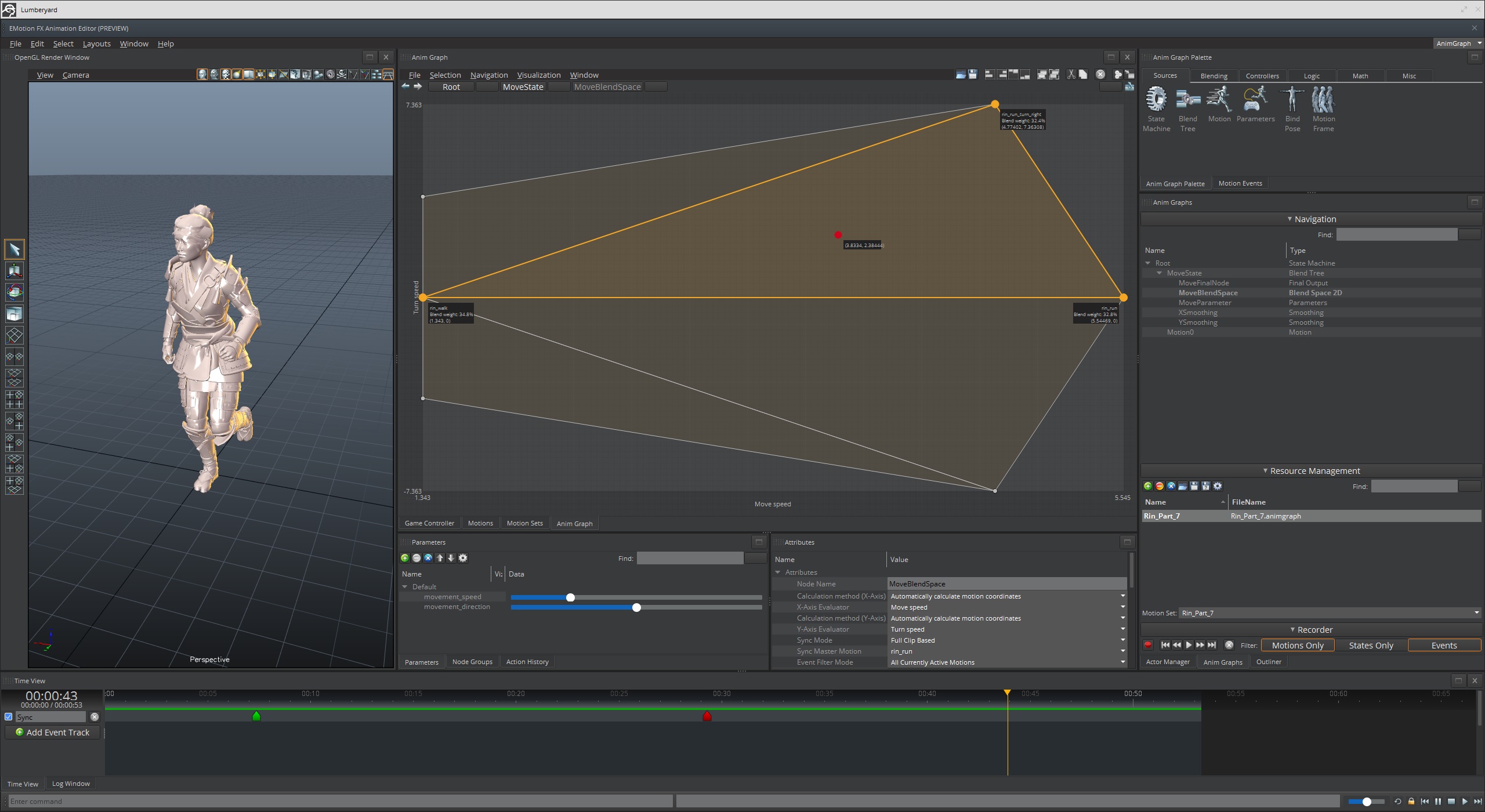New Animation, Scripting Tools Come To Lumberyard
Amazon’s Lumberyard game engine received a major update today, specifically to its animation and visual scripting departments. Version 1.11 introduces these new systems so that developers have an easier time creating multiple in-game scenarios and character movements.
The update includes over 400 changes to the existing engine, and developers will notice that character animations are easier to create with EMotion FX, which Amazon said is currently used by EA and Ubisoft. With this tool, animators can easily create seamless transitions between different types of movements by applying multiple script paths on the Node Editor. You can also fine-tune each movement. A brief clip in an accompanying video showed that you can adjust a character’s run and turn speeds.
Once you build a character’s movements in EMotion FX, you can combine multiple assets within your project and create a scenario with Script Canvas. Even though the new system still use the Lua and C++ programming languages, you can easily create different scenarios by adding multiple nodes that contain different events such as triggers and actions. You can then connect these nodes together with a line to create a flow of events that serves as the foundation for a simple action or pivotal battle.
The introduction of these tools means that older, similar software will phase out. In this case, EMotion FX replaces CryAnimation, Geppetto, and Mannequin, and Script Canvas will take on the role that was initially assigned to the Flow Graph system. In order to ensure that existing portions of a project will work with the EMotion FX and Script Canvas, the company created a CryEntity Convertor tool, which transforms specific CryEngine-based assets into the new “Component Entity data format.”
Other highlights of the update include the introduction of three new Cloud Gems, which are a cloud-based service that makes it easy to introduce new content into an existing game. These new Gems allow you to implement text to speech services, speech recognition and conversational gameplay scenarios, and in-game surveys.
Those looking to try out the the game engine will have a new “Getting Started” guide that will bring you up to speed on the current functions of the software. Once you start your own project, you can test your skills in new Project Templates. If you’re ready to give your a game a different look, you can apply the Toon Shader to your entire virtual world.
For the full patch notes, be sure to visit Amazon’s Lumberyard website. If you want to try out Lumberyard for yourself, you can download and use it for free.
Get Tom's Hardware's best news and in-depth reviews, straight to your inbox.
Rexly Peñaflorida is a freelance writer for Tom's Hardware covering topics such as computer hardware, video games, and general technology news.

